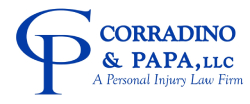
As the leaves change colors and the air turns crisp, the fall season brings about a transformation in nature. While it’s a beautiful time of year to enjoy the outdoors, it also comes with a notable increase in a particular hazard: collisions with wildlife in fall. Why do these encounters become more frequent in the fall, and what can we do to prevent them? In this article, we will delve into the intriguing world of animal behavior across seasons, exploring the factors that contribute to the rise in collisions with wildlife during this time of year.
Migration Patterns and Traveling Wildlife
One of the key reasons behind the uptick in collisions with wildlife in the fall is the migratory behavior of various species. Many animals, such as deer, moose, and certain bird species, embark on long journeys to reach their wintering grounds. These migrations often involve crossing roads and highways, putting them in direct contact with vehicles.
As temperatures drop and food sources become scarcer, these animals are driven to travel greater distances in search of suitable habitats. This increased movement can lead to unexpected encounters between wildlife and motorists, resulting in collisions that are dangerous for both parties.
Breeding Season and Increased Activity
Fall is also a critical time for many species to engage in breeding activities. For example, deer enter their rutting season during the fall, marked by heightened aggression and territorial behavior among males. This can lead them to be more active and less cautious when crossing roads, increasing the likelihood of collisions.
Similarly, smaller animals like squirrels and raccoons may be more active as they forage for food to store for the winter. This increased activity can bring them into the path of oncoming vehicles, leading to accidents that can have tragic consequences.
Reduced Daylight Hours
The changing seasons also bring a decrease in daylight hours, with nights growing longer as fall progresses. This reduction in visibility plays a significant role in the increased risk of collisions with wildlife. Many animals are naturally more active during dawn and dusk, a time known as crepuscular, when their predators are less active. Unfortunately, these twilight hours coincide with the morning and evening commutes of many drivers.
The combination of reduced visibility and wildlife activity during these times makes it more challenging for drivers to spot animals on or near roadways. This is especially problematic in areas where roads pass through or near natural habitats.
Food Availability and Foraging Behavior
Fall is a season of abundance for many animals as they prepare for the harsh winter ahead. For herbivores like deer and elk, autumn provides a wealth of nutritious forage in the form of fallen leaves, acorns, and other seasonal vegetation. As a result, these animals are more likely to venture closer to roads and highways in search of food.
Additionally, the presence of food can attract predators, such as coyotes and foxes, to areas near roadways where smaller prey animals gather. This increased activity near roads further elevates the risk of collisions, as these predators pursue their quarry across streets and highways.
Changing Habitat and Urbanization
Human activities and urbanization have encroached upon many natural habitats, forcing wildlife to adapt to a changing landscape. In the fall, animals may venture into urban and suburban areas in search of food and shelter. This movement increases the likelihood of interactions with vehicles, which can result in collisions.
To mitigate the risks associated with these changing patterns of animal behavior, it is crucial for both drivers and communities to take proactive measures. Implementing wildlife corridors, speed limits in high-risk areas, and public education campaigns can help reduce wildlife collisions and protect both humans and animals.
